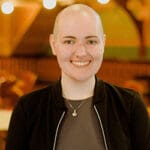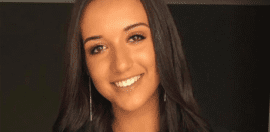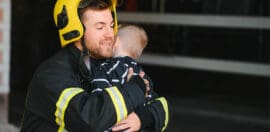How the creative arts and community sector can open opportunities for young people

13 July 2021 at 7:45 am
Creative programs can build a bridge of equity from the community sector to the arts so all young people, regardless of background, can embrace music and creativity, writes Jay Mifsud who shares their experience with youth program FReeZA.
As a young person who is passionate about both youth work and contemporary Australian music, I have had an interesting career pathway. I finished high school with academic excellence in media and music (technical production), I have been in and out of university degrees and diplomas, volunteered and interned, ran a business and managed projects, and completed a Certificate IV in Youth Work. After a year of COVID-19 unemployment spent volunteering via Zoom, I have landed myself employment in a creative arts facility as a youth worker. In my role I co-design events with creative young people and mentor them to confidently enter the contemporary music community. However, landing this opportunity was neither a coincidence, nor luck. And I couldn’t have achieved it if not for FReeZA.
What is FReeZA? On paper: It’s a “Victorian state government initiative to support all ages drug, alcohol and smoke free entertainment for 15- to 25-year-olds”. In reality? It is so much more, and serves to illustrate how the creative arts, government and community sector work together in creating opportunities for young people.
I started FReeZA at 14 years of age as a lover of music and aspiring musician. I was a FReeZA participant for five years, planning music and community events. This provided me confidence, music management skills, networking opportunities, and above all: it gave me a purpose when I desperately needed one.
COVID-19 has devastated the live events, music and creative sectors. And for young people more broadly, as stated in Youth Affairs Council Victoria’s COVID-19 Recovery Plan for Young People, “COVID-19 is a generation-defining pandemic which will disproportionately impact young people long-term”. Historically, there has never been a more important or better time for government and the community sector to step in to develop opportunities for young people interested in the creative industries. Throughout this pandemic, youth programs which involve creative outputs like FReeZA have been safe spaces for young people to stay connected. In a time when young people are isolated and disproportionately affected by issues such as financial insecurity, isolation, and mental ill-health, so many of the participants in my local FReeZA use our catch-ups and events as a healthy creative outlet and gain a sense of community, identity and belonging.
Despite this, the funding model of FReeZA hasn’t been modified since its last review in 2007, meaning funding has not been changed – not even by consumer price index (CPI) – to reflect its importance throughout COVID-19, nor the cultural shifts in youth culture or technology.
Governments can and should make stronger investments into programs like FReeZA, which ultimately create more job pathways for young people. Personally (although my thousands of dollars of student debt from university would tend to disagree), FReeZA was the most valuable resource for my career pathway. Attending university is something I had the privilege of doing in the ways of time, money, and resources. However, there were a finite number of opportunities or skills that university provided me that I didn’t already get through the FReeZA program. Many past FReeZA participants often use their creative skills and resources to provide reduced or in-kind support, performances, and resources to other young people to generate even more opportunities sorely needed in the creative industry.
FReeZA is also an invaluable asset in the history of many of your favourite Australian musicians and music professionals. FReeZA has existed since the late-1990s being provided by all municipalities in Victoria, reaching over 2 million young people. FReeZA has supported many live music events and organisations, from The Push and triple j’s historic Pushover Festival, to current leading Australian LGBTIQA+ organisation, Minus18. As a city of music and culture, Melbourne wouldn’t be the city it is today without FReeZA. Other states and territories could use a program like FReeZA to create similar opportunities and culture shifts in their region.
Creative programs such as FReeZA build a bridge of equity from the community sector to the arts so all young people can embrace music and creativity, regardless of their background. It’s free to participate in the FReeZA program, and funding can be used to run live music, community, and cultural events, as well as pay young people and purchase program resources (such as cameras, live or recording music equipment, printing merchandise and more).
I want to see more support for programs like FReeZA, not just to increase the reach and support provided to young people in Victoria, but also to pave the way for young creatives across the country.
Find out more information and how you can #EvolveFReeZA here.
This article is part of a monthly series, Youth Matters, a collaboration between Youth Affairs Council Victoria and Pro Bono Australia to inject the voices of young people into the social change sector.







